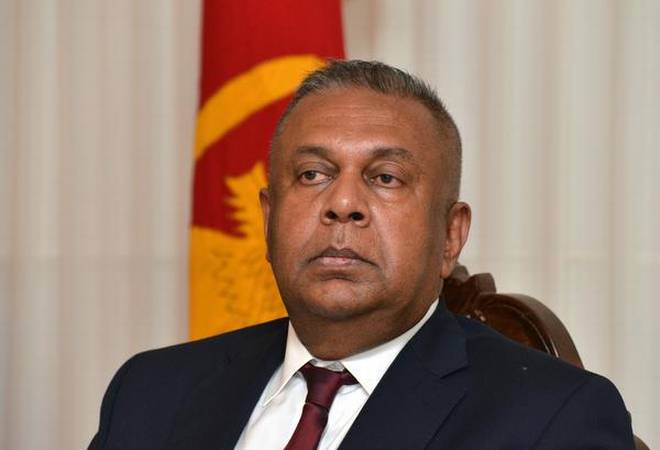Image: Sri Lankan Finance Minister Mangala Samaraweera.
Meera Srinivasan/The Hindu.
Debts amounting to LKR 1,400 million to be written off; interest rates capped.
With a partial debt write off, a cap on lending rates of microfinance companies and an imminent master plan for economic development, the Sri Lankan government has sought to revive the war-affected northern region.
Recently, Finance Minister Mangala Samaraweera who was in Jaffna, along with Prime Minister Ranil Wickremesinghe, announced that the government was writing off debts amounting to LKR 1,400 million, in 13 districts including in the five northern districts. The government has also passed a regulation to cap interest rates at 35% per annum.
“Whilst the drought was a major trigger factor, the unscrupulous practices of the lenders, particularly the unregulated loan sharks, played a major role in creating this debt trap,” Mr. Samaraweera said at a public event.
Microfinance loans
The loans written off are a fraction of the massive debt stifling virtually every family in the Tamil-majority north and east in the last decade since the war ended. In the absence of livelihood options and incomes the borrowers, mostly women heading households, were forced to resort to easy credit from microfinance companies that sold the loans at their doorsteps, charging exorbitant interest rates, at times up to 200%.
Following the Central Bank Governor Indrajit Coomaraswamy’s visit to the north in 2017, the government acknowledged the widespread crisis and initiated steps to arrest the problem of mounting household debt. Further, it allocated LKR 500 million to the north in the last budget to provide alternative sources of affordable credit to rural families through the widespread network of cooperative banks in the north.
However, given the limits of credit, the Central Bank recognised the need for a broader development framework for the war-affected regions that are home to some 11 lakh people, mostly Tamils, in order to ensure the people do not backslide into a debt trap. The Bank commissioned an economic development analysis of the north, from a team of experts based there.
Releasing a framework document recently, the committee has underscored the need to create jobs, boost income generation and local production.
The vision document, which is a precursor to a master plan for the region, also calls for a ‘Northern Planning Bureau’ to envision development based on the specific needs of a war-battered region, as a generic national plan may not address that.
Post-war development
“Much of the development after the war was infrastructure related — mostly roads and electricity. It was important, but not enough. The projects were scattered, not integrated and did not revive the region economically,” said B. Sivatheepan, chair of the Central Bank-appointed committee and a regional manager of the Bank in Kilinochchi.
Comprising professionals and academics based in the north, the team held consultations across the Northern Province to understand the requirements of the people in different districts – ranging from employment, education, health and sanitation, to market access. “Short-term measures may give immediate relief but it’s crucial that we build resilience in the community though slow and stable growth,” Mr. Sivatheepan told The Hindu.
